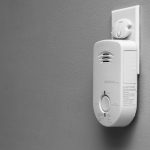Furnace
Furnaces fueled by natural gas are by far the most common heating system for homes in the United States. Newer models are very efficient. They tend to last 20 years on average, but they do require annual inspections and some basic maintenance to function safely and well.
Furnaces heat your home by circulating heated air through a series of ducts. That air is heated by the burning of fuel within the furnace. Furnaces can be fueled by natural gas, oil, and even propane, but natural gas is the most prevalent. As the fuel burns, the hot gases that are generated move through curved metal tubing called a heat exchanger, and then exit your home through a vent pipe. Simultaneously, the air circulating through your ducts passes over the exterior of the heat exchanger, and gathers heat from the hot metal. That warmed air is then circulated throughout your house. The heat exchanger keeps the combustion air and the supply air separate, ensuring that the air in your home is heated without risking exposure to the toxic gases that are the by-products of combustion.
Most furnace deaths are due to cracked heat exchangers. Cracks can occur over time due to expansion and contraction, as the burners turn on and off to regulate the heat in your home. That expansion and contraction eventually fatigues the metal to the point where it cracks. This is a serious issue, as even a small crack can allow for deadly carbon monoxide gas to enter your home.




 (252) 355-9191
(252) 355-9191
